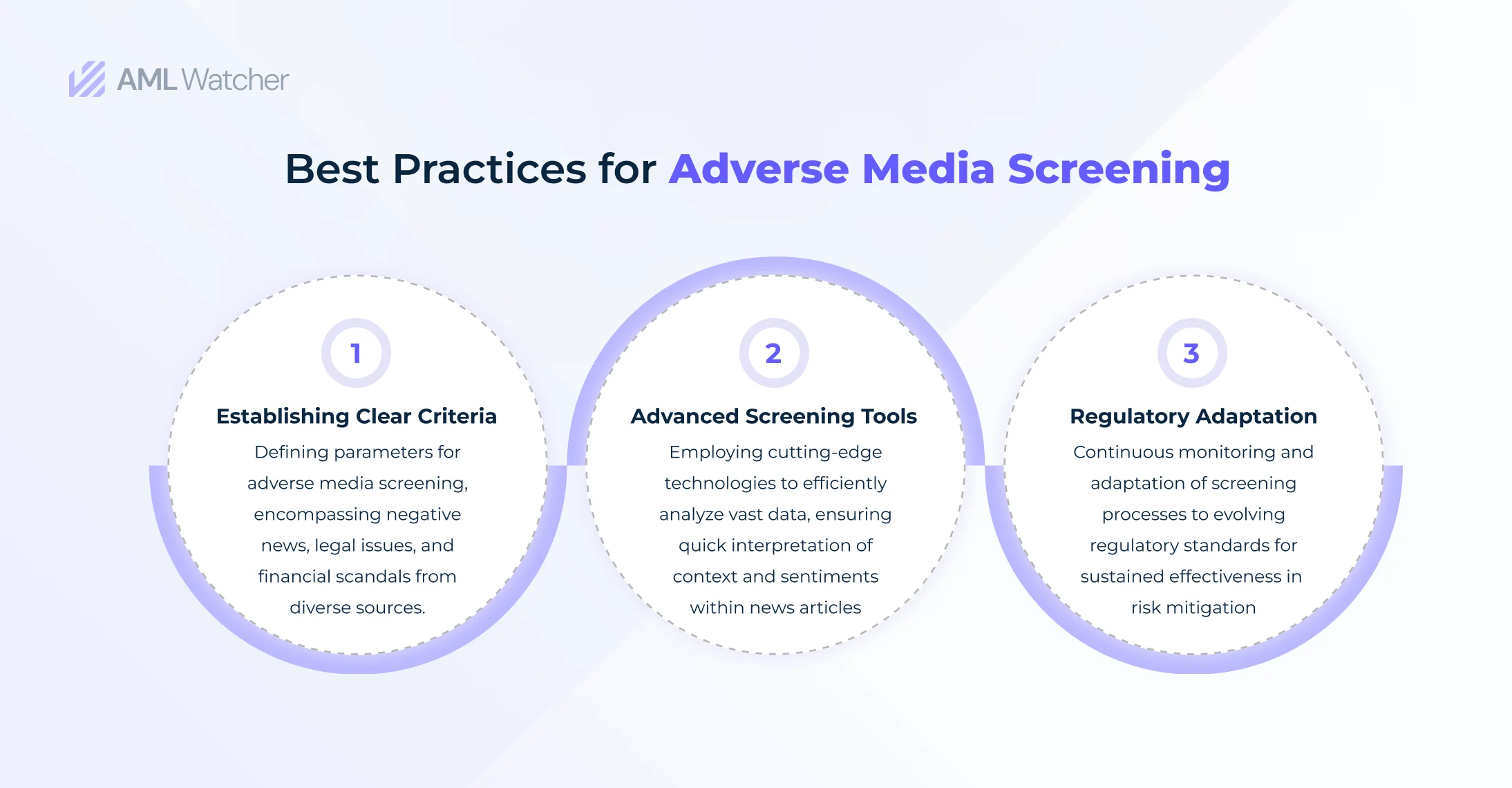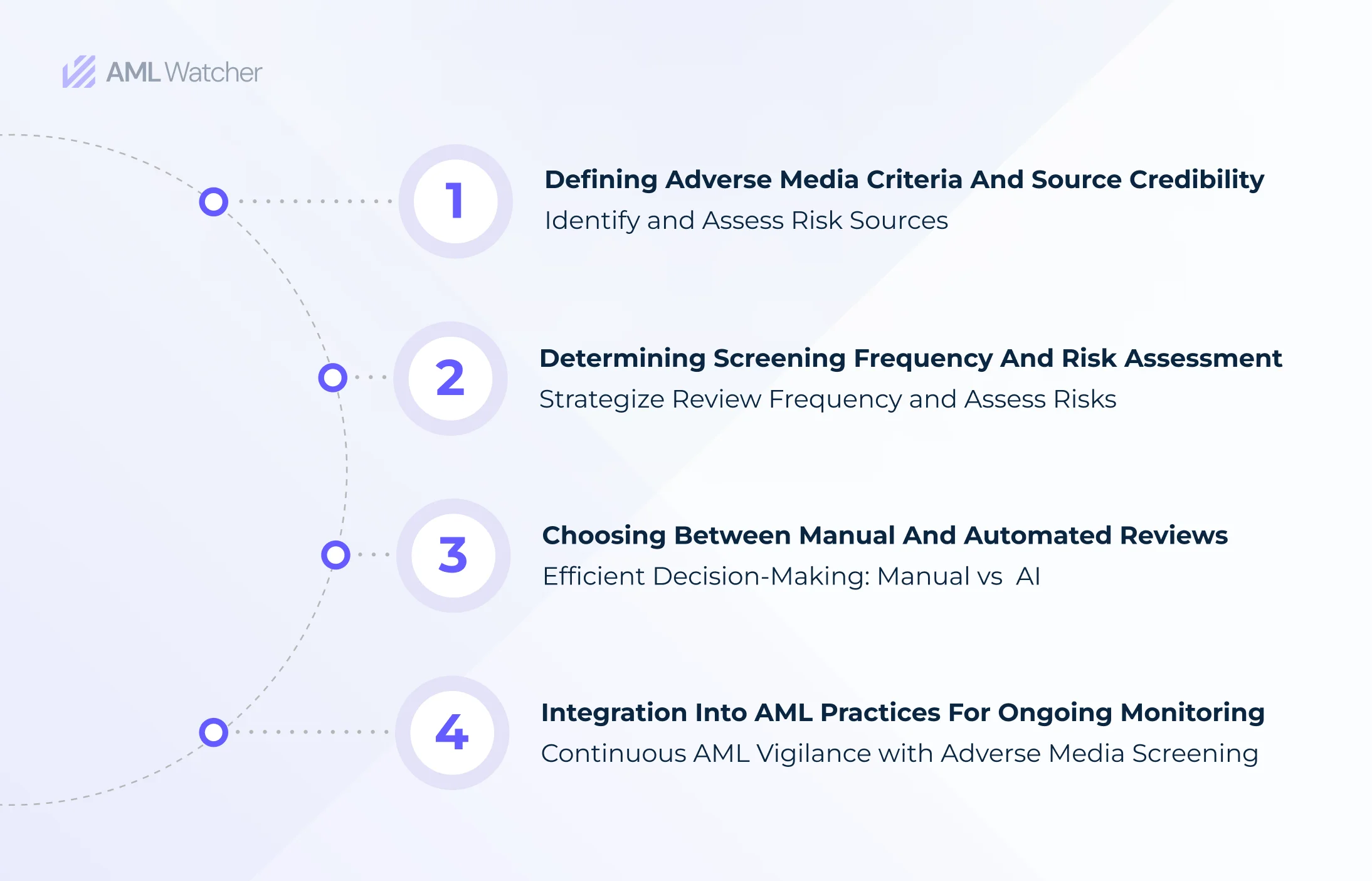
Adverse Media Screening – Overcoming Regulatory Challenge
When the financial sector intends on onboarding customers or perform due diligence on existing or new clients, it has to ensure that the stakeholders are not posing a threat of fraud or are not the targets of adverse media. For this purpose expansive and authentic media sources like news, published articles, and other media sources are scanned to search for any red flags that may suggest that the individual or entity is/was involved in a financial fraud or adverse activity like money laundering or terrorism. The relevant regulatory bodies have started prioritizing how the processes of due diligence and ongoing monitoring are performed for the sake of complying with AML policies. For this adverse media screening plays a critical role. For instance, financial institutions have faced significant fines for non-compliance with AML regulations. This is especially accentuated by the 1MDB scandal where even a renowned investment bank like Goldman Sachs had to pay a penalty of $2.9 billion because of oversight in the non-compliance of AML rule. This case exemplifies the consequences of poor due diligence and the process of assigning risks to individuals and entities, including adverse media checks. Hence, Effective adverse media screening is crucial for risk mitigation and ensuring adherence to legal and regulatory standards, thereby safeguarding the financial system’s integrity.
After briefly understanding what adverse media is, let us now understand the challenges embedded in this process in terms of regulations.
Regulatory Challenges in Adverse Media Screening
The financial regulations keep changing as new financial products emerge in the market. This makes it challenging to conduct adverse media checks which are fully compliant with AML laws. In the UK performing background checks, stringent due diligence, and ongoing monitoring is imperative as per the Financial Conduct Authority (FCA). Hence such laws and regulations mandate the performance of rigorous adverse media monitoring as a part of compliance procedures. However, on the flip side, laws like the General Data Protection Regulation (GDPR) in the European Union propogates the privacy of personal data and information which makes it arduous for financial institutions to perform online adverse media screening. There has to be an equilibrium in how the data which is now in the possession of the companies and the relevant stakeholders is processed and stored. All of this during the screening process must comply with GDPR rules. Such laws pose dual objectives for adverse media monitoring which makes the entire procedure challenging for the financial institutions.
To overcome the afore-mentioned challenges, the following practices which make the entire procedure of adverse media screening highly effective should be adopted.
Best Practices for Adverse Media Screening
In an attempt to systematically identify the threats and the risks associated with individuals and persons, adverse media checks should be effective.
Establishing Clear Criteria
It’s imperative to first set a standard or criteria to establish what adverse media screening really is. It consists of negative news articles, legal issues, or scandals involving financial crimes. The major sources of adverse media monitoring comprise the following:
- Newspapers published in print or online
- Radio
- TV broadcasts
- Blogs (Online or print)
- Web articles
- Social media platforms.
Advanced Screening Tools
For efficient screening of the vast amount of data available and also in order to read the context of the news, it is highly imperative that advanced technologies are used. It is important because reading and analyzing the sentiments in the news is a very important aspect that should quickly be performed by an advanced tool.
Staying Updated to Changing Regulatory Requirements:
Furthermore, staying up-to-date with the latest regulatory changes or standards is another best practice to ensure compliance. Continuous monitoring of screening processes is recommended to adapt to make sure the system keeps up with changing evolving risks of the individuals or entities they are associated with and maintain effectiveness.
Let us now understand how the process of adverse media checks is carried out.
The Process of Adverse Media Screening
A detailed procedure for implementing adverse media checks shows how extensively this process is done.
- Firstly, businesses have to be adept at recognizing what constitutes adverse media (which sources are used as the database) and then they have to assign the credibility or the authenticity of the sources being used. This also includes analyzing the sentiments or the context of the news so that the right judgment is made out of the information available.
- The next step determines the frequency of the number of times the review has to be done. This also includes risk assessment which entails which entities should adverse media screening be performed and how rigorously.
- The third step is to decide between manual or automated reviews, with AI-powered tools becoming increasingly popular due to their ability to handle large datasets efficiently. With AI tools becoming more handy and making the processes more efficient, it is determined if the screening should be performed in an automated manner or manually. If monitoring is carried out through AI, the vast amount of data sources can be scanned more quickly.
- Adverse media screening now forms a crucial aspect of AML. Organizations should ensure that it is not only performed during the onboarding process but also used as a way of ongoing monitoring under due diligence so that as the risk level of individuals and entities changes with time, adverse media checks can be performed on them to search for any potential threat.
Let us study an interesting case study that will further accentuate the significance of adverse media screening in AML.
Case Study On Adverse Media Monitoring
HSBC bank despite being a renowned bank faced a huge penalty of $1.9 billion owing to its inability to adhere to AML compliance regulations, which specifically pertained to adverse media checks. The parties were involved in forming drug cartels and this news about them was not identified on time. Through these cartels, huge sums of money were laundered. Additionally, the bank also breached U.S sanctions which it had imposed on Iran, Libya, Sudan, and Burma. Had an effective adverse media solution been in place, the threat of drug cartels would have been identified up-front by the bank and it could have saved itself from the whopping fines. This case is an excellent example that signifies the importance of the service like adverse media control in AML.
Wrapping Up:
A very well-developed system of online adverse news screening allows the assessment of risks, due diligence, and eventual compliance with the regulatory standards as given by AML laws. This is especially illustrated by the example of HSBC bank which faced a whopping fine of $1.9 billion because of an AML oversight, particularly related to adverse media screening. Despite the fact that this system is developed to perform enhanced due diligence and additional checks on the stakeholders, it is not without limitations. There are data protection laws as given by GDPR which make sure that personal information or data remains protected. Such laws impede the performance of adverse media checks fully because they demand access to critical and sensitive information or news related to individuals which could protect the companies from potential harm. To address these challenges, best practices include establishing and adhering to clear criteria/categories, using advanced screening tools, and staying updated on regulatory requirements. AML Watcher ensures a correct assessment of source credibility, determines ideal review frequency, and decides between manual or automated reviews depending on the case.
Contact us to ensure due diligence and ongoing monitoring of not just the clients being onboarded but the existing clients as well through adverse media screening.
We are here to consult you
Switch to AML Watcher today and reduce your current AML cost by 50% - no questions asked.
- Find right product and pricing for your business
- Get your current solution provider audit & minimise your changeover risk
- Gain expert insights with quick response time to your queries




